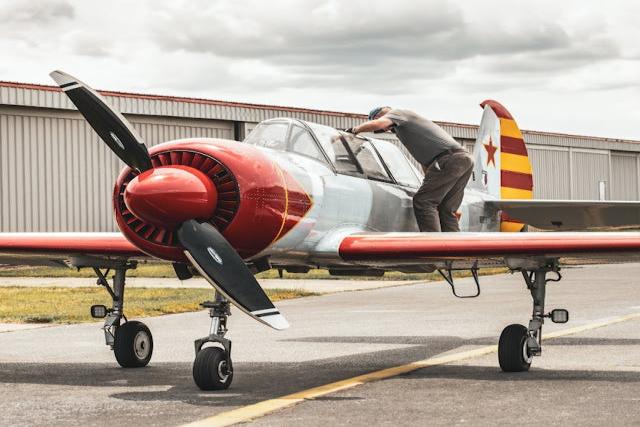
Aircraft maintenance, repair, and overhaul (MRO) encompasses a set of pivotal processes for ensuring that every aircraft operates at optimal safety and efficiency levels. This field encompasses a wide range of activities, from routine checks and unscheduled repairs to comprehensive overhauls, all designed to keep these complex machines airworthy. Today, as aviation technology advances and fleets expand, the industry faces increasing pressure not only to maintain high safety standards but also to reduce ground time for aircraft. This challenge, in turn, requires MRO to evolve.
Advancements in technology have ushered in a new era for aircraft maintenance. Modern MRO practices are increasingly influenced by innovations such as digital twins, predictive analytics, and robotic automation. These technologies go beyond simply modernising maintenance strategies; they are redefining them from the ground up. This shift empowers airlines and service providers to meet the current needs of the aviation sector and also sets the foundation for future developments.
Here are some of the cutting-edge practices that are setting new standards in aircraft MRO and are making it clear that the industry is shifting to be more sustainable, reliable, and technologically advanced.
Predictive Maintenance
Predictive maintenance is a strategic approach that harnesses the power of data analytics and machine learning to preemptively identify potential issues before they escalate into costly problems. This method enables technicians to continuously monitor the condition of aircraft components through sensors and data logs. From here, they can detect early signs of wear and tear. This approach is a departure from traditional maintenance schedules that are based strictly on time or usage intervals, and it provides a more nuanced and precise understanding of actual aircraft needs.
The primary benefit of predictive maintenance is that it significantly reduces unplanned downtime, as maintenance teams can schedule repairs before failures disrupt operations. This guarantees higher availability of aircraft and also enhances the safety of flights. By preventing failures before they occur, airlines can avoid emergency situations and maintain a stellar safety record that supports their consistent good standing in the global aviation industry.
Continuous Training for Maintenance Teams
As the aviation sector incorporates more advanced technologies, maintenance teams will need regular training in order to adapt. This keeps them abreast of the latest technological advancements and repair techniques required to effectively manage modern aircraft. Modern maintenance training regimens might include training on new tools, software and diagnostics equipment that are integral to today's data-driven maintenance strategies.
Organisations that foster a culture of continuous learning guarantee that their personnel will always be competent and confident in using cutting-edge technologies. Well-trained maintenance crews are also more adept at diagnosing and resolving issues quickly and accurately, which minimises errors and enhances the overall reliability of aircraft operations. An ongoing commitment to professional development bolsters the capabilities of individual technicians and, by extension, elevates the operational standards of the entire MRO sector.
Regulatory Compliance
The aviation industry is rigorously regulated, which makes maintaining compliance with local, regional, and international standards crucial for providers. These standards, set by bodies such as the Federal Aviation Administration (FAA) and the European Union Aviation Safety Agency (EASA), are designed to verify that all maintenance activities meet the highest safety and performance benchmarks. Compliance involves adhering to stringent protocols for every aspect of MRO, from routine inspections to major overhauls, to confirm that all procedures align with the approved methods and practices.
The importance of compliance extends beyond merely following rules and is meant to foster a culture of safety and accountability. Beyond wanting to avoid penalties and disruptions, airlines and maintenance providers adhere stringently to regulatory standards in the interest of building trust with passengers, regulatory bodies, and other stakeholders. This trust is fundamental to the reputation and long-term success of aviation enterprises globally.
Technology and Automation
The integration of technology and automation into MRO processes has been transformative. Robotic systems, for instance, are now employed to perform precise tasks such as inspections, painting, or even complex repairs that require high accuracy. These technologies speed up the maintenance process and improve the quality of work by reducing human error. In addition, tools like augmented reality (AR) provide technicians with real-time data overlays and step-by-step repair guidance, which enhance both the efficiency and accuracy of their work.
Automation also extends to the logistical aspects of MRO. Automated inventory systems ensure that spare parts are available when and where they are needed, streamlining the supply chain and reducing delays in maintenance schedules. The use of these advanced technologies refines operational workflows. It also supports the scaling of MRO activities to meet the demands of growing global fleets.
Sustainable Maintenance Practices
Sustainability in aviation maintenance is gaining traction as the industry seeks to minimise its environmental impact. One key aspect is the use of environmentally friendly materials and chemicals that reduce hazardous waste. Replacing traditional solvents and paints with less toxic alternatives, for one, significantly decreases the ecological footprint of maintenance activities. MRO facilities are also increasingly recycling and reusing parts and materials, and these efforts contribute to a circular economy within the aviation sector.
Energy efficiency likewise plays a crucial role in sustainable MRO practices. Many maintenance facilities are upgrading to energy-efficient systems and incorporating renewable energy sources like solar power into their operations to reduce their carbon footprint. Such initiatives also lead to cost savings over time, demonstrating that environmental sustainability and economic efficiency can go hand in hand in the modern aviation industry.
As the aviation industry continues to evolve, the landscape of MRO is being reshaped for the better. Improvements aimed at making aircraft operations safer and more efficient simultaneously set a new standard for environmental stewardship within the sector. Overall, these trends appear likely to continue propelling the entire industry forward into a more eco-friendly and technologically adept future.
Disclaimer: This post was provided by a guest contributor. Coherent Market Insights does not endorse any products or services mentioned unless explicitly stated.





